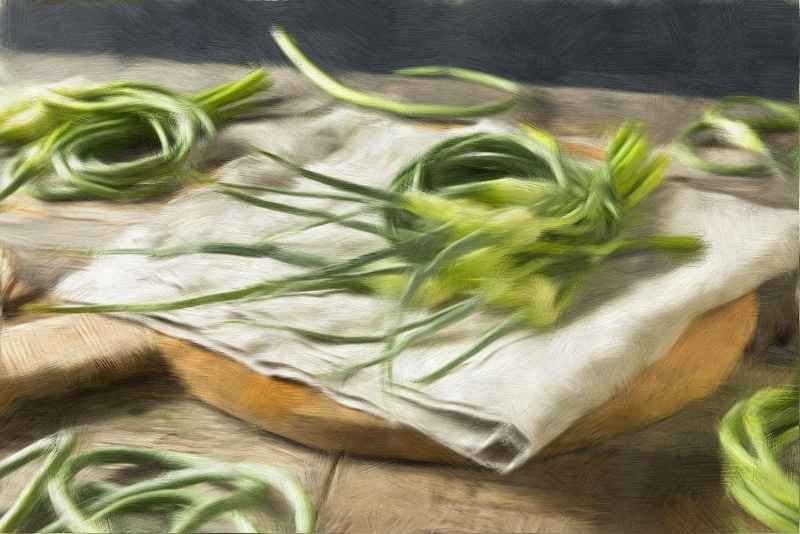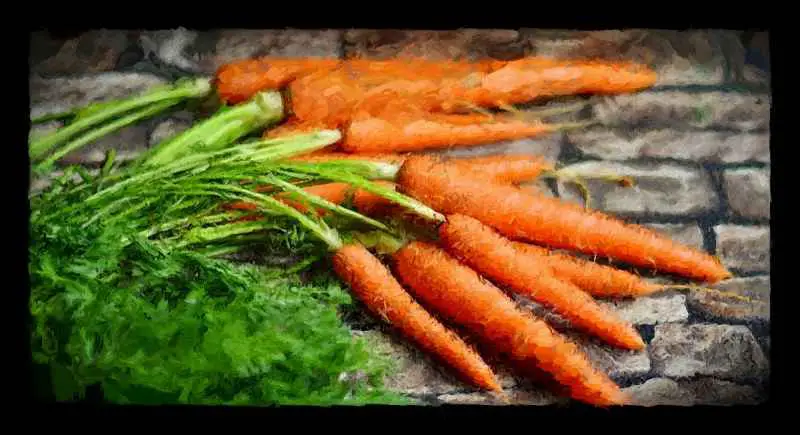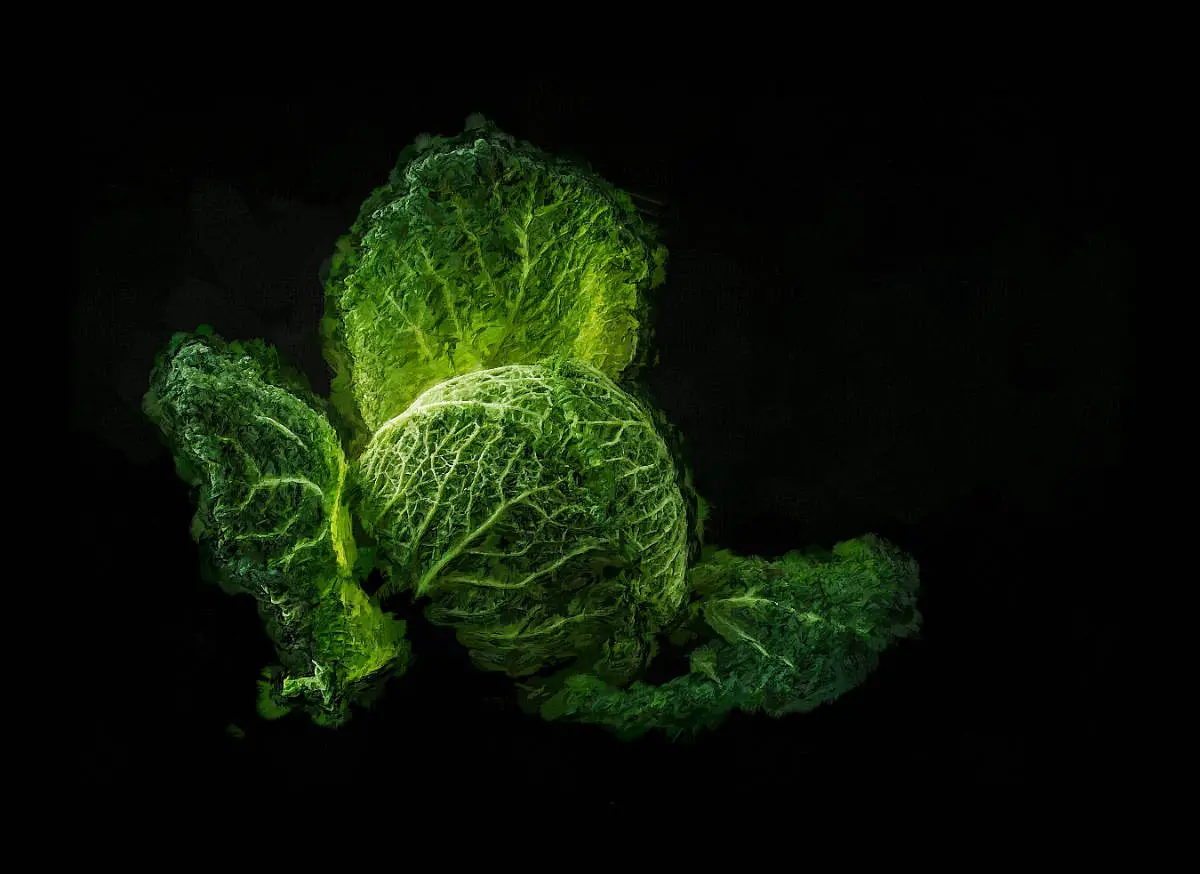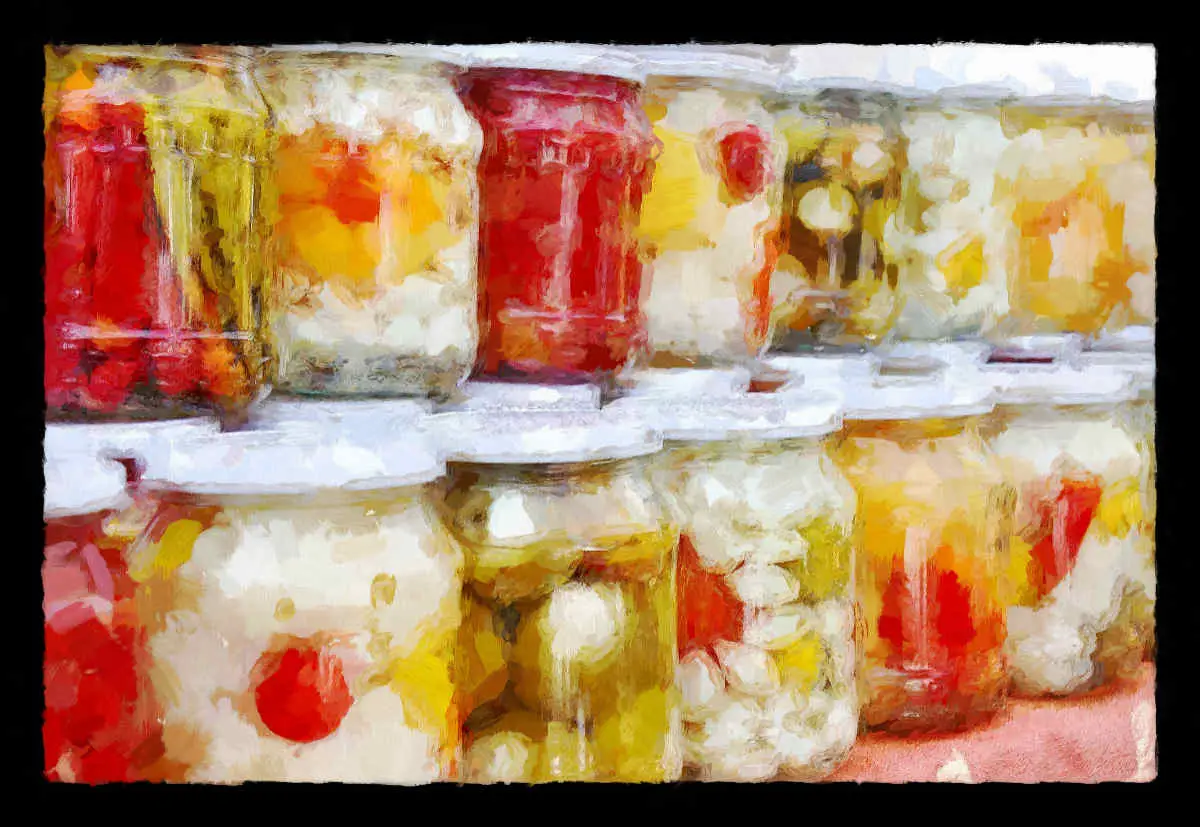Lacto-Fermented Tomatoes: TASTY BOMBS OF FLAVOUR
Have you ever thought about preserving green or red tomatoes with fermentation? YOU SHOULD! They are the most delicious bombs of flavour.
Lacto-fermentation is one of the oldest and, possibly, the tastiest way to preserve red and green tomatoes both homegrown and store bought.
It is also an incredibly effective way to add some special flavour to your salsa, pizza sauces, bruschetta, savoury cocktails and so on.
You should try making a salad and combine them with Giardiniera, adding some to Shatta sauce or serve them beside fermented cabbage rolls.
One word: divine.
TELL YOUR FRIENDS
As mentioned above fermented tomatoes have been around for hundreds of years, especially in the Balkans and Russia whose most famous recipe celery, dill, sugar, salt and garlic in the brine.
Why we don’t follow the Russian recipe
Fermentation time aside, which is usually a short 4-5 days one, Russian brined tomatoes differ from the recipe in this article also because of the size of the tomatoes they normally use.
Our choice to opt for a longer fermentation is motivated by this: together with some tasty tomatoes, we want to eat lactic acid bacteria and benefit from them.
In order for LAB to grow, multiply and fully colonise the jar we need to let the fermentation go for at least a couple of weeks at room temperature.
And that’s exactly what we do.
The Russian method, that stops fermentation at its first stages, produces food that still contains a mix of microorganisms.
And that mix also includes the yeasts living in and on the tomatoes.
Nothing wrong with that of course, in fact, I really invite you to give the Russian recipe a try.
But a lacto-fermentation carried through for longer, almost exclusively contains lactic acid bacteria and, as such, can potentially impact the overall well being of our body in a greater way.
The health of our intestine and the whole of our digestive system are the first that come to mind, but the benefits of lacto fermented food are far greater and wider
So lacto fermentation it is then.
Let’s dive in and see the 4 recipes you will learn today
- Fermented Ripe Tomatoes
- The Tastiest Fermented Tomatoes
- Fermented Tomato Juice
- Fermented Green Tomatoes
Choose The Best Tomatoes
Many people swear by the fact that any tomato variety is good for fermenting, but I somehow dissent.
I would always choose a small, bite size tomato, like cherry or date tomatoes ( pomodori datterini ) over any bigger one.
They ferment better and throughout the whole fruit, do not need to be cut and when you eat them they are so tasty it’s like eating a salty juicy olive.
But I would probably opt for a larger tomatoe variety if I were to pickle them with a vinegar based brine.
Does this mean that if your vegetable garden is exploding with Roma tomatoes you cannot ferment them?
No, not at all.
You should definitely give it a try to find out if they turn out as you expected and if they don’t, well, you will know for next time, right?
But maybe pickle half of them just to be sure…
And if by accident you are there wondering whether fermenting tomatoes is a hard task, you will be happy to hear that it is the exact opposite of difficult.
It is as easy as weighing a few ingredients and dropping them in a clean glass jar, put a lid on it and wait.
Because, really, all the work is done by the microorganisms and their wonderful metabolism.
All we do as fermenters is really just creating a nice environment for them so they can feel at home.
Would You Like
YOUR FERMIE LIFE
To Be EASIER?
Our FERMENTATION
PRINTABLES Will Do
Exactly That.
Fermented Tomatoes Recipe – Ripe Tomatoes
What you’ll need.
EQUIPMENT
- Glass jars with lids
- Weights to keep everything submerged in the brine
INGREDIENTS
- As many tomatoes as you have ( whole )
- Water ( not chlorinated )
- Salt ( without added iodine )
- Fresh Garlic
- Oregano ( fresh is better )
- Fresh chillies or chilli flakes
STEPS
- After you have washed all the ingredients and sterilised your jars place sliced garlic, chillies, and oregano at the bottom of the jars.
- Now place some tomatoes in every jar: then the sliced garlic, the chillies and the oregano and again tomatoes.
- Keep layering up to 3cm / 1inch from the mouth of the jar.
- Add water to every jar enough to fully cover everything, but always leave the suggested head space.
- Now pour out all the water from every jar into a container and weigh it on a scale
- Add 5% of the weight of water in salt ( 5 grams of salt for every 100 grams of water )
- Stir to dissolve and pour the salty water ( brine ) back into the jars full of tomatoes
- With a chopstick ( or any other tool ) gently push around the ingredients to remove any air bubble
- Place a weight, a cabbage leaf or half an onion on top of the tomatoes and press down to make sure that everything is submerged by the brine
- Close with a lid and let them ferment for at least 10 days or, even better, for 2 weeks
- Burp your jars ( unscrew the lids without lifting them ) once a day to release some of the CO2 produced
When you have passed the 10 day mark you can begin to taste the ferments: if they reached a flavour profile you are happy with you can place them into cold storage.
That’s really all there is to it.
Simple, right?
So now that we have warmed our toes with this recipe let’s keep the ball rolling and move on to the next one.
Join Our Community
Fermented Tomatoes – THE TASTIEST RECIPE
Be prepared because these tomatoes are SO GOOD you and your family might develop a serious addiction!
This recipe is still very easy but slightly more complex than the previous one, in fact you will treat your tomatoes in three different ways.
What you’ll need.
EQUIPMENT
- Glass jars with lids
- Weights to keep everything submerged in the brine
INGREDIENTS
- 1 kg / 2 pounds of whole ripe tomatoes
- Water ( not chlorinated )
- 30 gr of salt ( without added iodine )
- Fresh Garlic
- Oregano ( fresh it’s better )
- Fresh chilies or chilie flakes
- Fresh onion or shallot
- Fresh ginger
- Fresh lemon or lime
STEPS
- Take 200gr ( ½ a pound ) from the tomatoes and put the rest aside for now.
- Put them in a blender with: 30 grams of salt, 2 cloves of garlic, half a small onion, some grated ginger, a hint of lemon zest and a teaspoon of lemon juice.
- Blend everything together and put aside in a container
- Now take 4-5 whole tomatoes, cut them in quarters and add them to the blended mix.
- Place some of the mix on the bottom of a jar then begin to add some whole tomatoes and oregano leaves
- Then again more blended mix then tomatoes and oregano and so on.
- Keep layering until you reach 3 cm / 1 inch from the mouth of the jar
- Make sure the whole tomatoes are fully covered by the blended mix
- If the mix is not enough just add some water in order to submerge all the ingredients.
- With a chopstick gently push the produce around to remove any air pocket.
- Place a weight, or a cabbage leaf or half an onion on top of the ingredients and press down making sure all your tomatoes are fully submerged.
Important: don’t forget to release CO2 by unscrewing the lids every day to avoid overflowing or explosions ( yes, fermented stuff can explode ).
This fermentation will likely go faster than the previous because of the blended ingredients, I therefore suggest you put your jars in the fridge after 7 days have passed.
In the refrigerator fermentation won’t completely stop, but it will be sensibly slowed down by the low temperatures.
But what if I have green tomatoes?
Not a problem, we can ferment them too.
Finally we have an effective way to preserve and enjoy that bounty of unripe fruits that won’t have time to turn red at the end of the growing season.
Fermented Green Tomatoes
To make this recipe you will follow the same steps required to lacto ferment red tomatoes, with the exception that you will let the fermentation go for a whole month.
What you’ll need
EQUIPMENT
- Glass jars with lids
- Weights to keep everything submerged in the brine
INGREDIENTS
- As many tomatoes as you have ( whole )
- Water ( chlorine free )
- Salt ( iodine free )
STEPS
- Fill up every jar with unripe tomatoes up to 3cm / 1inch from the mouth of the jar
- Pour enough water in every jar to fully cover the tomatoes
- Now pour out all the water and weigh it on a scale
- Add 5% the weight of the water in salt ( 5 grams of salt for every 100 grams of water )
- Stir to dissolve and pour the salty water ( brine ) back into the jars full of tomatoes
- Remove all air bubbles by pushing around the tomatoes with a chopstick or the back of a spoon
- Weigh them down until they are permanently submerged
- Seal the jars and put them in a corner of your kitchen at room temperature
Now allow me spend a couple more words about this recipe…
Green tomatoes are, by definition, not ripe and that often means they have a harder peel and texture compared to ripe tomatoes.
The long fermentation time takes that into account and is therefore necessary to make the final eating experience a pleasant one.
After all I think that nobody really enjoys chewing on something that resembles cardbord or hard leather, correct?
Green tomatoes also have a very different taste than their red and ripe relatives.
Because of that, it’s best to begin this fermentation journey with a plain recipe that will transform them into something somehow similar to olives.
After the first tasting you will be able to modify and enrich the recipe by adding your favourite herbs and spices.
Trust your taste buds; they will tell you what marries best with green tomatoes.
And after learning how to ferment whole red tomatoes and green tomatoes let’s see how we can ferment tomato juice.
Lacto-Fermented Tomato Juice – RECIPE
The recipe is simple and straightforward but that does not stop the fermented juice from being one of the most versatile ingredients ever.
It will take soups, salsas, sauces, stews and even cocktails to a whole new level.
What you’ll need
EQUIPMENT
- A Blender or a Juice extractor
- Clean jars or bottles
INGREDIENTS
- Tomatoes
- Salt
STEPS
- Wash tomatoes and put them in a high speed blender to blitz them or in the juice extactor if you have one.
- Add 2.5% of the weight of the tomatoes in salt ( 25 grams of salt every kilo of tomatoes )
- Blend again to dissolve salt.
- Place the tomato juice in a jar, screw the lid on and let it ferment at room temperature for 3-4 days
- Burp every day at least once a day
After 3-4 days have past give the fermented juice a try: if you are happy with the taste you can drink it as is or add it to any of your favourite recipes.
If, instead, you wish to preserve it or to let it ferment for longer at a slower pace, place it in the refrigerator and it will keep for some weeks.
But, if after all this talking about fermenting tomaotes, you are still wondering how they taste like, here is my honest review.
About the taste of fermented tomatoes.
Spoken by someone who deeply dislikes raw tomatoes ( I know, I know… ) fermented tomatoes taste divine.
They are salty, tangy and slightly fizzy.
Basically they are a bite sized pop of deliciousness and a tasty bomb of flavour all into one.
Plus, by the end of fermentation, they will have absorbed all the distinct flavours of every herb and spice you added to the brine.
You have to try them.
Seriously.
Taste and deliciousness aside, there is an important thing to mention, especially considering it is a matter of food safety.
The shelf life of fermented tomatoes.
If jars have been properly cleaned and if all the ingredients are submerged by the brine at all time, fermented tomatoes can naturally last several months inside the refrigerator.
But, if you want to make them last even longer, all you need to do is water bath them.
That alone will assure you that every potentially harmful bacteria has been killed in the process.
TELL YOUR FRIENDS
Just a reminder
The intense heat of water bathing and pressure canning will ALSO kill all the good microorganisms as well.
Taste won’t be affected much by the process, but you will lose all the beneficial effects that fermented food can have on your body.
And this is it.
Over to you and your first jar of fermented tomatoes!
We always look forward to knowing if you used any of our recipes and how it went so let us know using the comment section below.
Also, if you have questions we are very happy to help you out.
See you soon









I like fermenting larger tomatoes and usually compensate for the size by pricking a deep hole in the woodiest part of the top of the tomato with a thick needle or an awl (sterilize before using). Go to about half the depth of the tomato ideally – the rest of the recipe is the same.
Evie that’s great!
I am sure one could make great passata or tomato sauce with those bigger tomatoes plus your tips are really useful.
Thank you so much for sharing with us